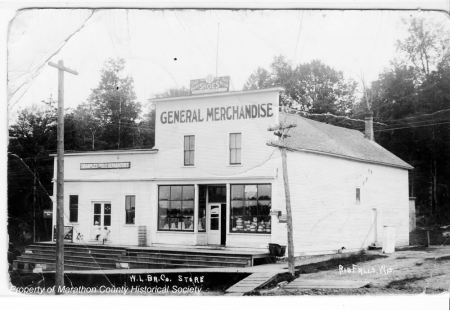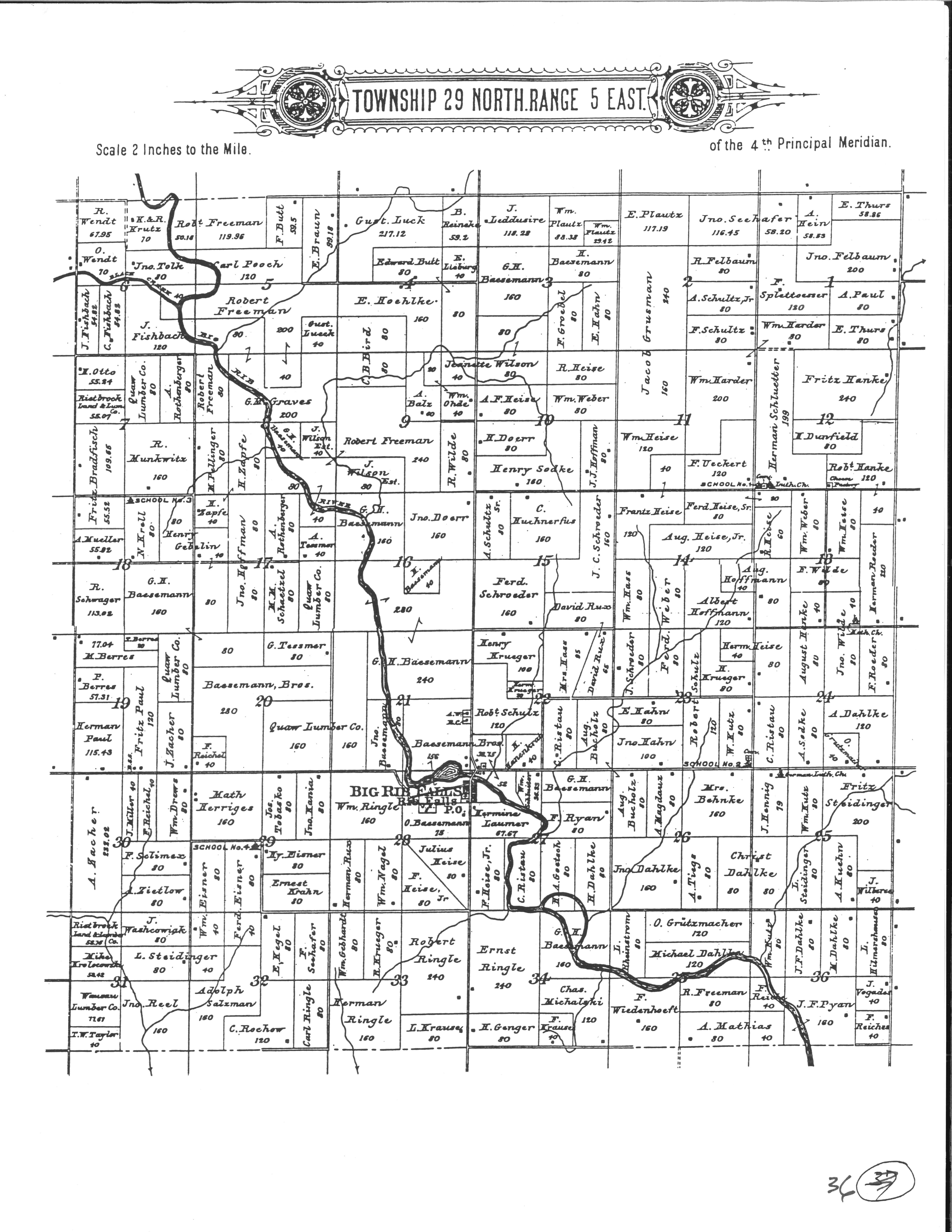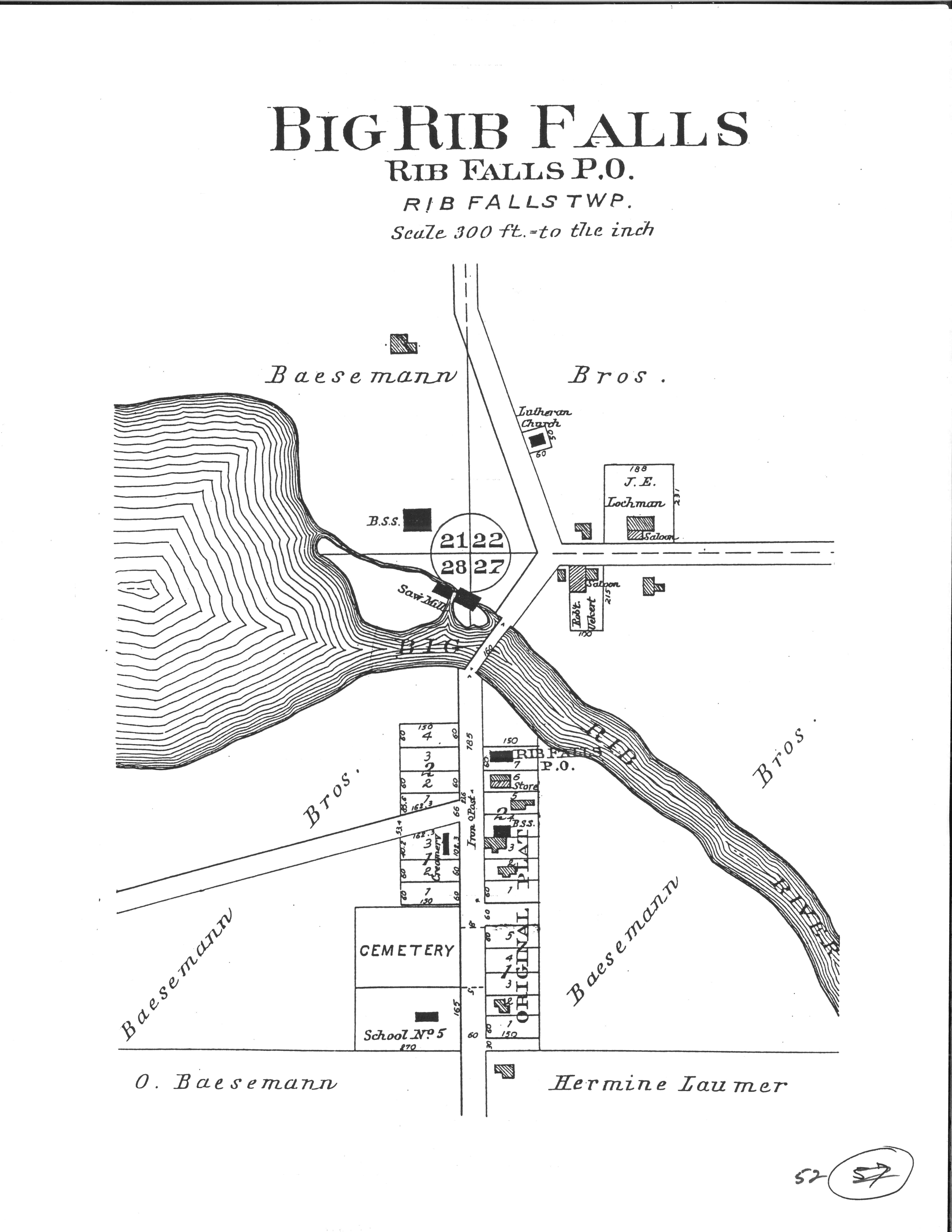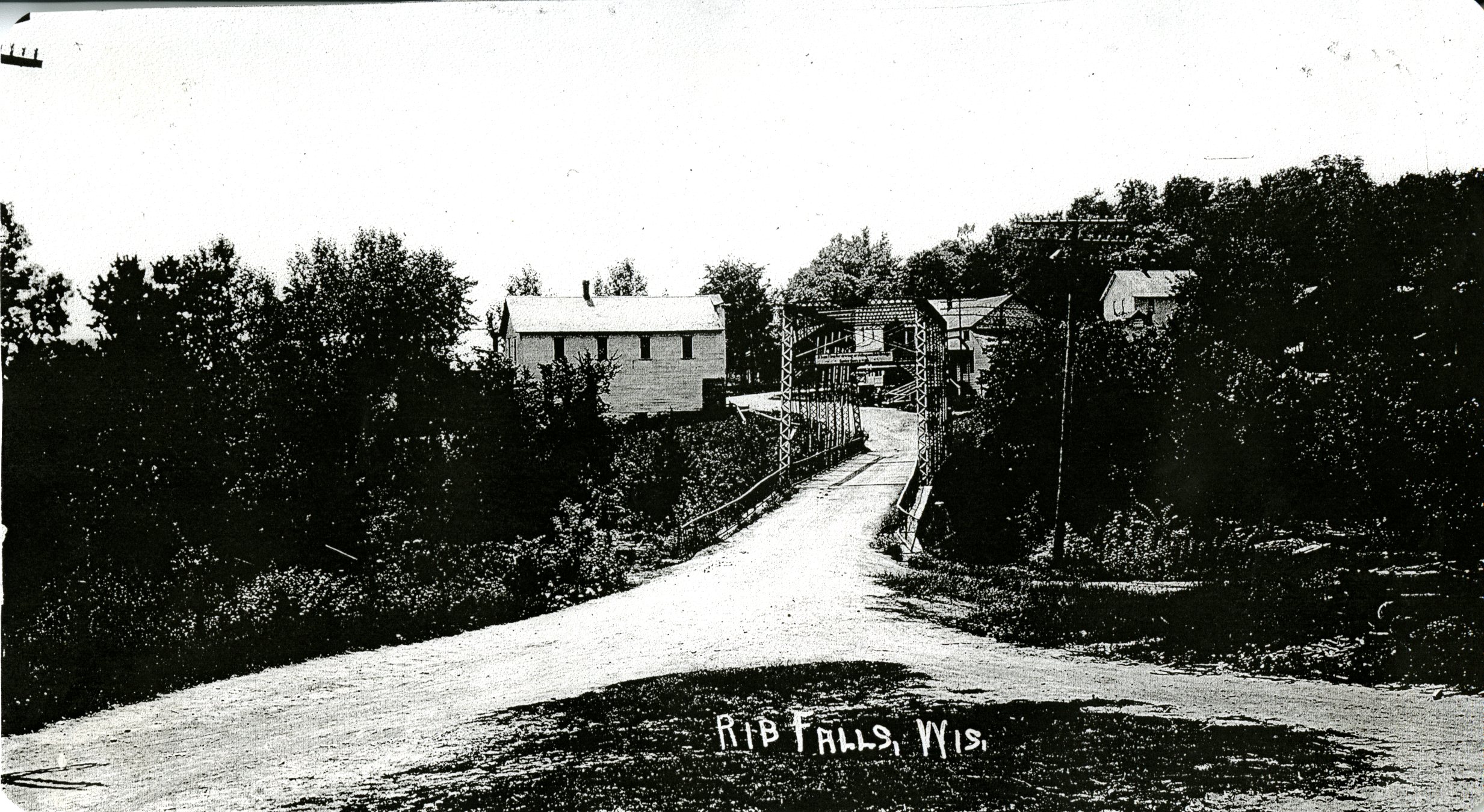Search our Places Database
Rib Falls, Township of
Return To List of Locations | Back to Search
For more information on this location, please contact our research library.

Author:
Mary Moltzan
Location:
T. 29 N. - R. 5 E.
Formallized:
1876
Background:
Population: 1905-771, 2000-907
The town of Rib Falls separated from Stettin Township in 1876 and reached its present size in 1879. Rib Lake in Taylor County is the source of the Big Rib River which flows through the township and into the Wisconsin River at Lake Wausau. It was the only early route through the northwestern part of the county until roads were built.
The town showed no decisive growth until John Baesemann arrived in 1866.
Rib Falls Park is located near the site where John Baesemann and his family built the sawmill on the Big Rib River . At the mill lumber and shingles for local farm buildings were sawed from logs that were harvested from Baesemann's upstream timber holdings. In the years that followed, Baesemann went on to build a grist mill, blacksmith shop, general store and rental houses in what became known as the community of Rib Falls.
First Public Official:
John Baesemann
Biography:
A blacksmith by trade, Baesemann came from Germantown and built a dam and saw mill in the late 1860s . A grist mill followed in 1876 which greatly helped local farmers, saving them a 15 mile trip to Wausau over a bad road. Baesemann was a big contributor to pioneering efforts of early Rib Falls Township.
Post Office Established:
February 28, 1877
First Postmaster:
Louis Schneider
About The Post Office:
The P.O. was located in the northwest one-fourth of Section 27. It was discontinued on April 30, 1911. This post office was the only one ever in existance in the township.
Churches:
1. Rib Falls Methodist Church located in Section 13 began in 1864.
2. St. John's German Evangelical Lutheran Church was built by John Baesemann in about 1879.
3. Immanuel German Evangelical Lutheran Church was built in about 1889.
Schools:
In 1901, there were four schools in the township:
1. #1, Section 11;
2. #2, Section 23;
3. #3, Section 18;
4. #4, Section 29.
By 1913, there were two more schools according to Marchetti.
Business:
See Background
Industry:
Grist mills
Sawmills
Logging operations
Cheese factory





